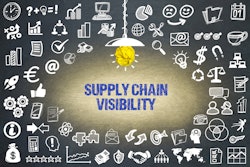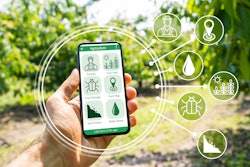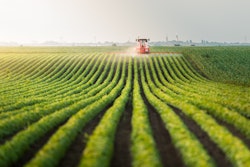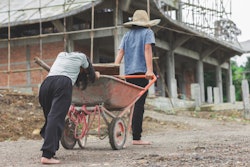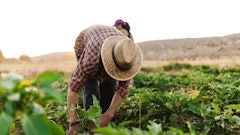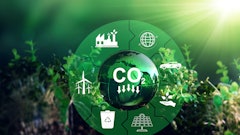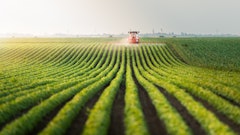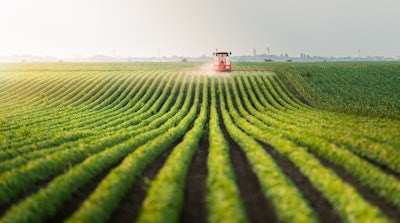
The past year was an eventful one for the food and beverage industry. For starters, record-breaking heat waves stressed cocoa trees, drying and rotting cocoa beans, which decimated crop yields and drove prices to unprecedent heights. The price for cocoa jumped from $2,500 to $11,000 per ton. Some experts predict that chocolate could become a luxury item by 2050 if the trend continues.
Other crops are also at risk, including maize, peanuts, olive oil, sugar, and coffee. These crops suffered considerable losses in 2024, forcing food and beverage companies to resort to "shrinkflation" and pass increased costs onto consumers.
Compounding 2024’s extreme weather stress, the looming uncertainty of the European Union Deforestation Regulation (EUDR), which was initially set to take effect on Dec. 30, 2024, created an unprecedented compliance landscape so complex that many companies found themselves unprepared. Many companies struggled to build compliance operations, which involved developing internal policies, establishing reporting protocols, and implementing new workflows. Implementing these steps could easily span six months or longer and companies that had not started were significantly behind. The regulation's requirements for extensive supply chain traceability, including geolocation data for production areas, posed particular difficulties for companies with complex global supply chains. All of this led to the European Commission’s postponement of the enforcement date by 12 months.
These challenges, while they were tough to navigate, showed the urgency for more innovative approaches and laid the groundwork for industry change in 2025. As we embrace a new year, the industry stands on the verge of a fundamental transformation of how food is sourced, produced, and reported.
Here are three key transformations expected to impact the food and beverage industry over the next 12 months.
1. Diversification sourcing will prevail over single-source supply chains
The growing impact of climate change and geopolitical instability has made it clear that traditional supply chain models are no longer sufficient. Recent disruptions, from record-high coffee prices to unprecedented turbulence in cocoa markets, have underscored the urgent need for more adaptive sourcing strategies.
Companies will hedge against market challenges and supply risks this year through strategic over-purchasing and supplier diversification in volatile markets. Businesses are adopting a dual approach: prioritizing local sourcing to reduce transportation costs and support regional economies, while simultaneously diversifying globally to mitigate risk and ensure consistent supply. In addition, companies are also leveraging predictive analytics and advanced technologies to identify emerging risks and opportunities more effectively. This balance between local and global suppliers, combined with timely field insights, enables companies to remain more agile, adjusting procurement decisions in real time as disruptions occur without derailing operations.
This diversification strategy may complicate supplier relationships in the short term, but it offers a necessary safeguard against the uncertainties shaping global food systems. In 2025, successful supply chains will be about more than just efficiency. They will be defined by their resilience and ability to adapt to an increasingly unpredictable world.
2. Regenerative agriculture: From concept to critical practice
With climate change intensifying the pressure on traditional farming practices, regenerative agriculture will grow in popularity and become more streamlined. Techniques like cover cropping, crop rotation, and reduced tillage are already gaining traction—not just for their use in crop protection, but also for overall environmental sustainability. These practices help restore soil health, improve biodiversity, reduce greenhouse gas emissions, and create more resilient food systems.
But the real shift in 2025 will come from how these efforts are measured and scaled. Historically, regenerative farming has struggled to scale due to challenges in quantifying its benefits, high transition costs, and a lack of standardized measurement systems across diverse geographical regions. A heightened focus on data in 2025 – not just any data, but actionable insights that show what’s working and where improvements are needed – will change this by providing tangible evidence of regenerative practices' impact. This will enable farmers and companies to make informed decisions, optimize resource allocation, and demonstrate value more effectively. The goal will be to strike a balance between tools that are scientifically robust and practical enough for everyday use in the field.
3. Sustainability reporting: A new era of transparency
Driven by emerging regulations like the EUDR and aligned with international frameworks such as the International Sustainability Standards Board (ISSB) and Global Reporting initiative (GRI), companies are being compelled to develop more strategic and real approaches to data collection, balancing depth and breadth.
Instead of broad, meaningless estimates, such as GHG emissions for a specific crop in a specific region, organizations are now starting to employ sophisticated sampling techniques and targeted deep dives. The goal is to create sustainability reports that are not just compliance documents but genuine reflections of environmental progress. For instance, companies in the food and beverage sector are starting to measure and report Scope 3 greenhouse gas emissions from farming activities. This approach allows companies to track the impact of specific interventions, such as improved soil management for carbon sequestration or optimized fertilizer use to reduce nitrous oxide emissions. This shift promises to drive more informed decision-making and simplify future regulatory compliance.
Next steps for industry leaders
Navigating these shifts in 2025 will require companies to get closer to their fields and their suppliers. This means:
- Improving supply chain visibility to identify vulnerabilities and opportunities more easily and comply with emerging regulations. Supported by advanced technologies, such as supply chain mapping combined with geographic information systems (GIS), traceability and predictive analytics, companies can proactively monitor their entire sourcing network, anticipate potential disruptions, and create more resilient and transparent supply chains that adapt quickly to changing market conditions and regulatory requirements.
- Enhancing supplier engagement to build trust and collaboration amid supply chain diversification and to garner support for new regenerative practices. Companies must communicate openly about expansion strategies, inviting current suppliers to be part of a more robust network. This involves creating joint sustainability initiatives, providing access to technology, and developing shared value propositions that transform potential competition into mutual growth opportunities.
- Adoption of emerging technologies for true ground sourced insights. By leveraging technologies like remote sensing and GIS, originally designed for agricultural data management that can integrate multiple data sources, companies can transform raw information into actionable decision support systems, dramatically improving operational efficiency, sustainability tracking, and strategic planning across their supply chains.
The food and beverage industry is at a turning point. The challenges of 2024 have exposed weaknesses but also sparked new ways of thinking about resilience, transparency, and sustainability. The way to produce and source food is changing, driven by shifts in the fields and the supply chains they support. These changes are reshaping the very foundation of our food systems, with lasting implications for the future.





